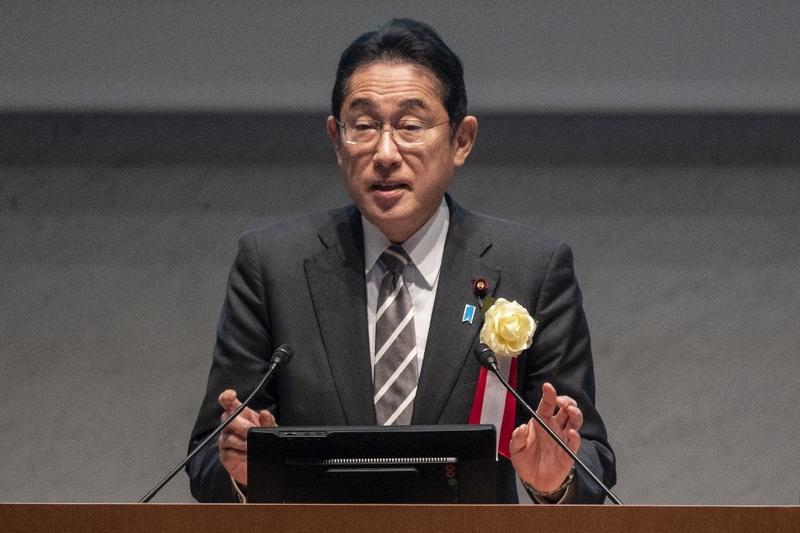 Japan's Prime Minister Fumio Kishida delivers a speech during the 11th Japan Business Federation, known as "Keidanren", Board of Councillors' meeting at the organization's headquarters in Tokyo on Dec 26, 2022. (RICHARD A. BROOKS / AFP)
Japan's Prime Minister Fumio Kishida delivers a speech during the 11th Japan Business Federation, known as "Keidanren", Board of Councillors' meeting at the organization's headquarters in Tokyo on Dec 26, 2022. (RICHARD A. BROOKS / AFP)
TOKYO - Japanese Prime Minister Fumio Kishida starts a tour of key Western partners on Monday, after unveiling his country's biggest military buildup since World War Two.
Kishida, who will host a summit of the Group of Seven industrial powers in May, will meet leaders of the United States, Britain, France, Italy and Canada this week. Talks are expected to range from economic security and semiconductors to the conflict in Ukraine.
"As leader of the G7 chair this year, I'll be making this visit to reaffirm our thinking on a number of issues," Kishida told a Sunday news program.
Prime Minister Fumio Kishida visits London and Rome after agreeing last month to develop a new jet fighter with those countries. He is to sign a deal with Britain that will establish a legal framework to allow visits by each other's armed forces, the Yomiuri newspaper reported on Friday
"With the United States, we'll discuss deepening our bilateral alliance and how to maintain a free and open Indo-Pacific."
He visits London and Rome after agreeing last month to develop a new jet fighter with those countries. He is to sign a deal with Britain that will establish a legal framework to allow visits by each other's armed forces, the Yomiuri newspaper reported on Friday.
Issues on Friday's final stop at the White House are expected to include Japan's plans to arm itself with missiles and the bilateral defense agreement.
ALSO READ: Japan, US arranging summit meeting in Washington on Jan 13
"He'll be going to show the US that this has been concluded - and, with the G7 summit approaching, to touch base with the rest of the G7 to confirm their stances on Ukraine and Asia," said political commentator Atsuo Ito.
Japan's new defensive capabilities may require Washington and Tokyo to revise guidelines that define the roles they play in a decades-old alliance that lets the United States keep warships, fighter jets and thousands of troops in Japan.
Last revised in 2015, the guidelines will likely be among the subjects discussed by Japan's defense and foreign ministers and their US counterparts on Wednesday before Kishida meets President Joe Biden, a Japanese defense ministry official told a briefing on Friday.
On semiconductors, Japan and the United States are deepening cooperation on advanced chip development.
Both countries are eager to ensure their manufacturers have access to components considered key to the new technology-driven industries such as data storage, artificial intelligence and quantum computing.
READ MORE: Kishida walks tightrope to redemption with planned defense splurge
Even without any major announcements, Kishida will hope his G7 tour boosts his flagging domestic support, hammered by cabinet resignations and a scandal over his party's ties to the controversial Unification Church, analysts said.
"Holding a successful G7 summit would bring him maximum political points - and this trip is preparation for that," said Airo Hino, a political science professor at Waseda University.


